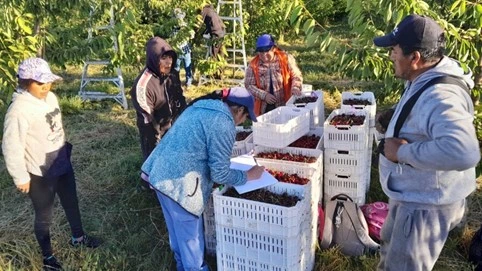Cherry quality refers to a set of attributes that evoke a sense of well-being when consumed. Desired characteristics include size, color, stem freshness, firmness, sweetness, and balanced acidity, as well as the absence of defects such as bruises, cuticular disorders (e.g., lizard skin), or internal fruit browning, which can cause bitterness when tasted. All these attributes vary between different varieties and even within the same fruit, depending on the ripening stage.

1. Evaluation of quality parameters based on ripening
Fruit color is a crucial indicator of the ripening stage of cherries, directly affecting the most important quality parameters. In this context, firmness is a particularly important attribute because soft cherries are less attractive to consumers, have a shorter shelf life, and are more prone to diseases. Optimal firmness not only enhances market acceptance but also facilitates storage and transport, enabling producers to access distant markets and achieve better returns.
To address this challenge, a study was conducted over two seasons to evaluate how the ripening stage at harvest, determined by color, influences cherry quality. The study analyzed fruits at different ripening stages, considering colors 2 (red), 3 (mahogany red), 3.5 (typical mahogany color of Santina), and 4 (dark mahogany) in the Santina, Lapins, Kordia, and Regina varieties. Firmness, a key quality parameter, was measured using specialized electronic equipment (Firm Pro).
This approach allowed tracking the evolution of firmness throughout the ripening process, providing valuable insights for harvest management and the post-harvest potential of each variety.
Fruits were harvested in the early morning and transported in cooled containers to the INIA Quilamapu Fruit Quality Laboratory (Chillan, Ñuble), where they were quickly submerged in a cold bath containing water, 10% sodium hypochlorite (100 ppm), and Scholar 230 SC fungicide (230 g/L fludioxonil; 100 cc/hl) at a temperature of 5°C for approximately 2 minutes. The fruit was then selected and classified based on color using white illumination and a color guide chart as a reference...
Want to read the full article? Sign up for our free Cherry Times newsletter! This is the only way to receive each new article directly in your inbox and stay updated with high-quality advice and analysis. Don't miss this unique opportunity!
Sign up for the Cherry Times newsletter for free!
Cherry Times - Tutti i diritti riservati











